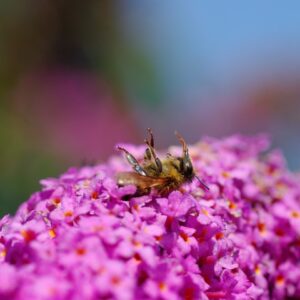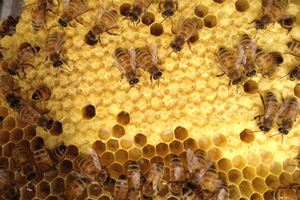- All-In-One Beekeeping for the Bees
- +1-608-728-8233
- info@beepods.com
Air Pollution- The Silent Killer
Remember a couple of weeks back we saw how rising global temperatures were causing harm to honey bees? Well, we have some bad news…air pollution is also hurting them.
We all know that air pollution exists and that it is caused by burning fossil fuels, waste in landfills, exhaust from cars and factories, and other factors. So, you may be thinking this is bad for honey bees because they are inhaling toxins from the air like we do every day, but there is more to it.
Air pollution does not just release toxins into the air and evaporate, air pollution also causes damage to crops and trees by what we call ground-level ozone.
For those of you who haven’t heard of ground-level ozone before, it is the earth’s lower atmosphere. And is formed by things like gasoline vapors, industrial emissions, and motor vehicle exhaust.
The ground-ozone level is a catastrophic layer of our ecosystem. This layer can cause reductions in agricultural crops, commercial forest yield, reduce growth and survivability to seedlings and increase plant susceptibility to diseases, and can even cause harsh weather.

Dead Bee laying on a hyacinth flower in the garden
Now that you know some of the basic effects that come from ground-level ozone, let’s discuss how air pollution and the ground-level ozone plays a role in the overall life of honey bees.
Ability To Forage
As air pollution is increasing, bee foraging is decreasing. Studies are finding that air pollutants are starting to cause problems with scent molecules in flowers. They will break down these scent molecules, which bees and other insects are using to locate food.
The scent molecules are modified by pollution odors which in turn confuses the bee so eventually they stop returning to these areas that are being polluted. And that means that their foraging decreases. A study by NASA even went so far as to say that moderate air pollutant levels substantially degrade floral volatiles and alter the chemical composition of these scents.
Not only do the harmful effects of the ozone alter the composition of flowers but they also drastically affect the health of plants. Some harmful effects on plants include reduced growth, change in metabolic function or produce acid rain changing the pH. Decreasing plant health has the capacity to reduce the availability of flowering species which destroys bees’ habitats and forces them to travel further in search of pollination.
You may be thinking “So what’s the big deal, bees will have to travel a little further to find food?”
For starters, the longer time bees spend foraging and traveling, the less time they spend pollinating. Bees depend on foraging for survival and the survival of their colony depends on this too. As habitats, plants, and flowers decrease, get altered, and die off, bee foraging becomes much more difficult to do. This will lead to a decline in bee populations just as we’ve already seen.
So, after another gut wrenching article about a decline of bee population (sorry) you are probably hoping that we have some ideas on how you can help these little fellas! You’re in the right place! You all know how passionate we are about the environment here at Beepods, and we do as much as we can to help every day. Here are some useful tips that you can use daily to help reduce air pollution.
- Reduce car trips (Ride a bike or walk instead)
- Avoid gas-powered lawn equipment
- Refuel your car in the evening when it is cooler
BEE the change and educate others about what is happening to our furry friends and the environment so we can help them forage, pollinate and reproduce!
Bonus Info:
About: Health and Environmental Protection
About: Plant Response to Air Quality
https://cfpub.epa.gov/si/si_public_record_Report.cfm?Lab=NHEERL&dirEntryId=50437
About: Air Quality Implications
https://airquality.gsfc.nasa.gov/sites/default/files/airquality/Sirk_AQ_honeybees.pdf
About: Actions You Can Take to Reduce Air Pollution
https://www3.epa.gov/region1/airquality/reducepollution.html
Elizabeth Allon
Latest posts by Elizabeth Allon (see all)
- Short But Mighty: The Stages of Life - January 26, 2022
- Honey Bees Vs. Highways - January 19, 2022
- 4 Ways to Save The Bees in 2022 - January 12, 2022



